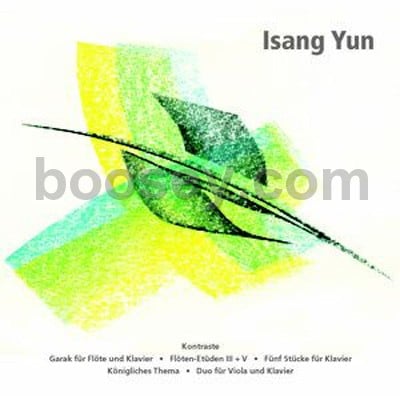B&B
Already in the second movement of the Music for Seven Instruments (1959), the second work published by Yun in Europe, the idea of the long-drawn-out tone inspired by Sino-Korean court music appears in germinal form and for the first time. Around 1963 he reflected on this idea, also theoretically, as a Hauptton or Hauptklangtechnik and tested it systematically in Gasa for violin and piano (1963) and Garak for flute and piano (1963). Garak (or karak) is, as Yun states in the foreward of the score, "a melody sequence with a set expressive character"; in traditional Korean music this term is understood as referring to some two hundred melorhythmic formulas with which the changdan basicform can be executed individually in each case. As a rule, Korean music begins with an impulse on the part of the percussion instruments; then the leading, often flute-like instrument comes in for the first long-drawn-out tone. Garak too begins with such ceremonial processes and contains a middle part of melismatic animation and then a recapitulation-like conclusion combining the long-drawn-out, gradually ascending individual tones from the beginning with the melismas from the contrast part. ln relation to the Haupttontechnik, here the serial-technical organization operates as a second, as it were, subterranean layer.
Watter-Wolfgang Sparrer (1992, translated by Susan Marie Praeder)

Roswitha Staege, flute / Randolf Stöck, piano
Internationale Isang Yun Gesellschaft IYG 007
